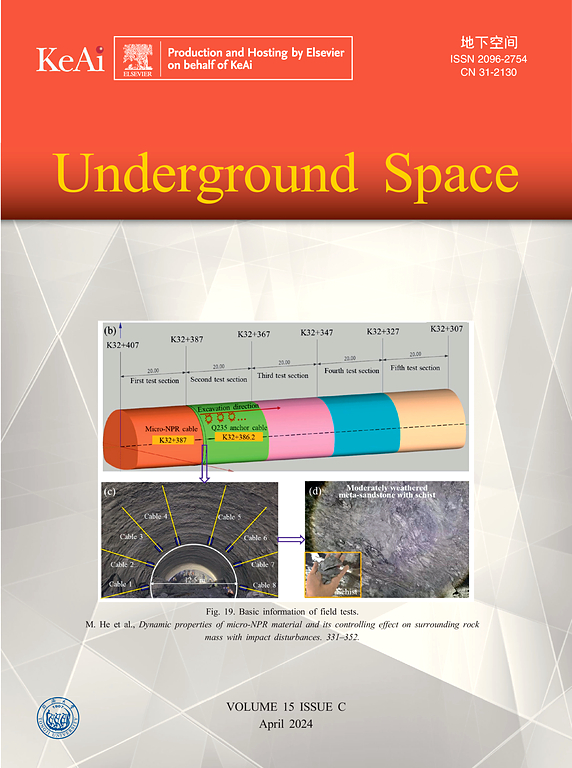Optimizing microseismic sensor networks in underground space using Cramér–Rao Lower Bound and improved genetic encoding
IF 8.3
1区 工程技术
Q1 ENGINEERING, CIVIL
引用次数: 0
Abstract
The layout of a sensor network is a critical determinant of the precision and reliability of microseismic source localization. Addressing the impact of sensor network configuration on positioning accuracy, this paper introduces an innovative approach to sensor network optimization in underground space. It utilizes the Cramér-Rao Lower Bound principle to formulate an optimization function for the sensor network layout, followed by the deployment of an enhanced genetic encoding to solve this function and determine the optimal layout. The efficacy of proposed method is rigorously tested through simulation experiments and pencil-lead break experiments, substantiating its superiority. Its practical utility is further demonstrated through its application in a mining process within underground spaces, where the optimized sensor network solved by the proposed method achieves remarkable localization accuracy of 15 m with an accuracy rate of 4.22% in on-site blasting experiments. Moreover, the study elucidates general principles for sensor network layout that can inform the strategic placement of sensors in standard monitoring systems.
基于cramsamr - rao下界和改进遗传编码的地下空间微震传感器网络优化
传感器网络的布局是决定微震源定位精度和可靠性的关键因素。针对传感器网络配置对定位精度的影响,提出了一种创新的地下空间传感器网络优化方法。利用cram - rao下界原理建立传感器网络布局的优化函数,利用增强的遗传编码对该函数进行求解,确定最优布局。通过仿真实验和铅笔芯断裂实验,验证了该方法的有效性,证明了其优越性。通过在地下空间采矿过程中的应用,进一步证明了该方法的实用性,在现场爆破实验中,采用该方法求解的优化传感器网络的定位精度达到了15 m,准确率为4.22%。此外,该研究阐明了传感器网络布局的一般原则,可以为标准监测系统中传感器的战略放置提供信息。
本文章由计算机程序翻译,如有差异,请以英文原文为准。
求助全文
约1分钟内获得全文
求助全文
来源期刊

Underground Space
ENGINEERING, CIVIL-
CiteScore
10.20
自引率
14.10%
发文量
71
审稿时长
63 days
期刊介绍:
Underground Space is an open access international journal without article processing charges (APC) committed to serving as a scientific forum for researchers and practitioners in the field of underground engineering. The journal welcomes manuscripts that deal with original theories, methods, technologies, and important applications throughout the life-cycle of underground projects, including planning, design, operation and maintenance, disaster prevention, and demolition. The journal is particularly interested in manuscripts related to the latest development of smart underground engineering from the perspectives of resilience, resources saving, environmental friendliness, humanity, and artificial intelligence. The manuscripts are expected to have significant innovation and potential impact in the field of underground engineering, and should have clear association with or application in underground projects.
 求助内容:
求助内容: 应助结果提醒方式:
应助结果提醒方式:


